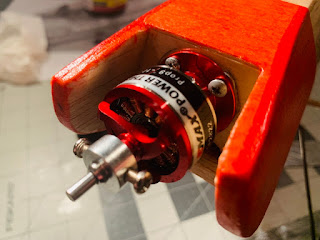Fuselage, part 1
Before setting out to build the fuselage I decided to do some planning and lots of reading. My Chicken Hawk will be powered by an electric motor so I had to make some changes to the fuselage in order to accommodate a battery, an ESC, and a different motor form factor. The plans also depict a control mechanism that I will replace with two 9 gram servos and a receiver. Because I don't have access to the plans of the modern kit, my only option was to closely examine picture on various build logs and articles, as well as draft some ideas before starting to cut any balsa.
My modifications were simple. I replaced the bottom covering between former F1 and F3 with a hatch and an opening for the battery. I also refashioned former F2 with a larger opening. Moving former F1 forward by 3/4" gave me more space for the electronics and eliminated the need for any extension to the motor backing.
Heeding the advice of others, I was very careful marking and cutting the fuselage sides. I used two 4" wide 1/16" thick stock, and taped them together with double sided tape, then taped the edges together.










Comments
Post a Comment